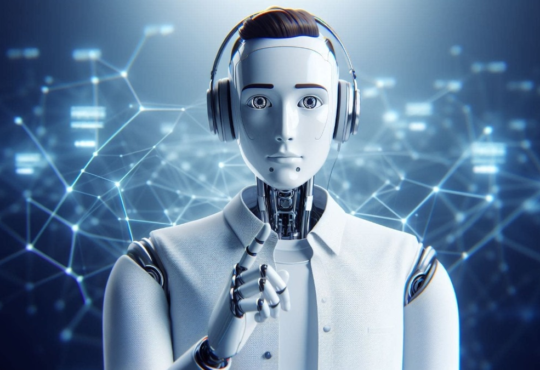
Today’s world is characterized by economic and non-economic disruptions that are deeply intertwined: volatile markets, inflation, geopolitical tensions and war, the energy crisis, and climate change. No one business, government, or society can tackle challenges on this scale alone.
To reunite our fragmented world, we must change — both within our own four walls and beyond — and technology plays a key role in this.
Faced with strong fluctuations in supply and demand, dynamic purchasing behavior and growing pressure to innovate, companies recognize the need to become more agile and resilient. But for many, fragmented process landscapes prevent them from reacting quickly to change. Data is often stored in silos and so is not equally available to all decision-makers.
Digitalization and the automation of core processes end-to-end is not only a competitive advantage, it is critical to an organization’s survival. This is not about replacing people with tech. It’s about giving people back the freedom to do what they do best: be creative. With reliable data and the help of artificial intelligence (AI), companies are better able to keep track of what is happening in their business and why. This not only makes them more efficient, but also more flexible and faster, especially in times of crisis.
However, it is no longer enough to be resilient as an individual company. This is just the first step toward a new way of doing business.
Globalization has made our supply chains more complex and, as a result, also more vulnerable. At the height of the COVID-19 pandemic, about 94% of Fortune 1,000 companies were struggling with supply chain issues. Climate change, the pandemic, the war in Ukraine and geopolitical tensions worldwide have shown the limits of our current economic models, with the impact of this hitting the agricultural, energy, and hi-tech industries particularly hard.
Resilient supply chains have, therefore, become a priority, and technology the enabler — where linear one-to-one connections are prone to disruptions, networks of many-to-many connections allow companies to collaborate with partners along their value chain and exchange data in real-time. The 360-degree transparency across the entire value chain provides businesses with the flexibility and resilience to navigate even in the most dynamic environments. They can anticipate risks and manage sourcing, trading, and distribution all the way to the consumer. They can optimize inventories, match supply and demand, and identify bottlenecks before they even occur. In case of supply chain disruptions, companies can quickly select alternative or more sustainable suppliers.
The future belongs to companies that understand how to operate profitably, resiliently, and sustainably together with their ecosystem. And this mindset, the understanding of the power of ecosystems, is one of the most important prerequisites for solving global challenges.
The recent report by the World Meteorological Organization (WMO) shows that the past eight years have been the warmest on record. The sea level rise rate has doubled since 1993, with the increase over the past two-and-a-half years accounting for 10% of the total increase over the past 30 years. In addition, with growing sociopolitical pressure and increasing social inequality, the importance of sustainability is changing.
Business leaders feel the urgency from all sides. Investor awareness around global challenges such as climate change, pollution, and inequality have increased, as has customer demand by a factor of seven from 2021 to 2022. Employees are making career choices based on their employer’s sustainability commitments and track record while governments are introducing new regulations. Sustainability, therefore, needs to become the North Star of every company, an integral part of the corporate strategy.
There is no business without sustainable business, and when it comes to the planet, the connection between digital and climate is fundamental to solve human problems. Promoting digital solutions for energy efficiency, scope 3 transparency, circularity, and carbon data sharing — in collaborative networks led by industry leaders and climate coalitions — will become a powerful blueprint for future sustainable business strategy, particularly in high-emission sectors like energy, materials, and mobility.
Ultimately, collaboration and networks are at the heart of the solutions to our global challenges. In a business network, companies can not only measure environmental, social, and corporate governance (ESG) in their own company, but across their whole value chains. They record verified data based on actuals, not averages. They can report against a quickly evolving set of ESG standards and, most importantly, they can act beyond ambitious targets by embedding sustainability across all of their business processes and value chains. This enables companies to create fair and safe working environments, reduce waste, and decarbonize the entire value chain (scope 1-3) — providing the basis of the circular economy. At the end of the day, companies are only as sustainable and resilient as their ecosystems.
In an increasingly fragmented world where global challenges threaten to divide us, technology plays a vital role in bringing us together.
Christian Klein is CEO of SAP SE.
This story originally appeared on the World Economic Forum website.
United States
+1-800-872-1727
Or see our complete list of local country numbers
Contact us







